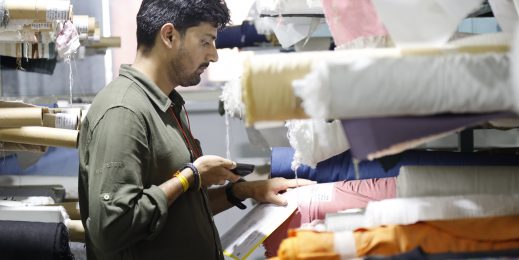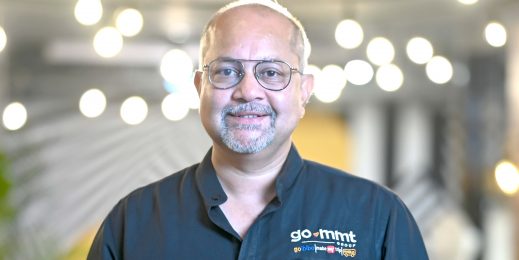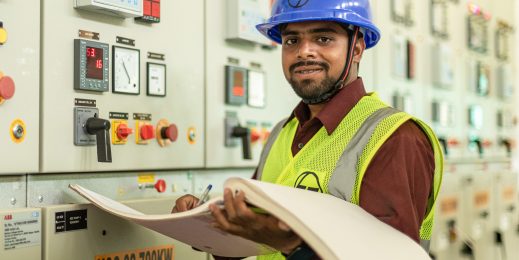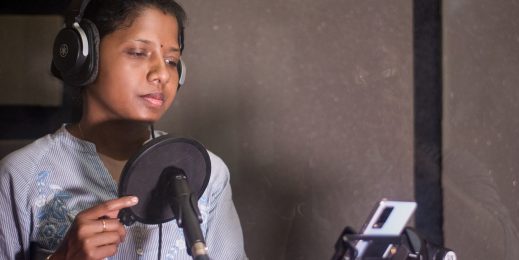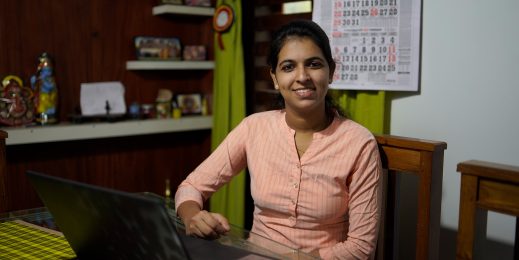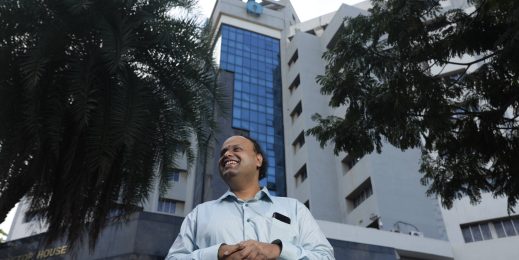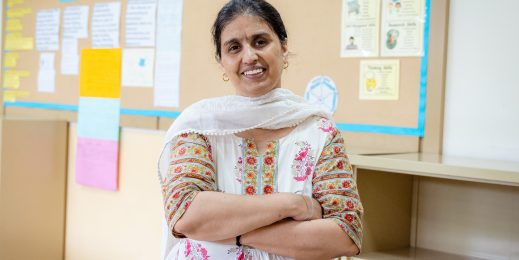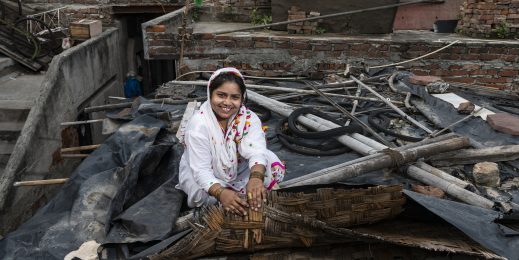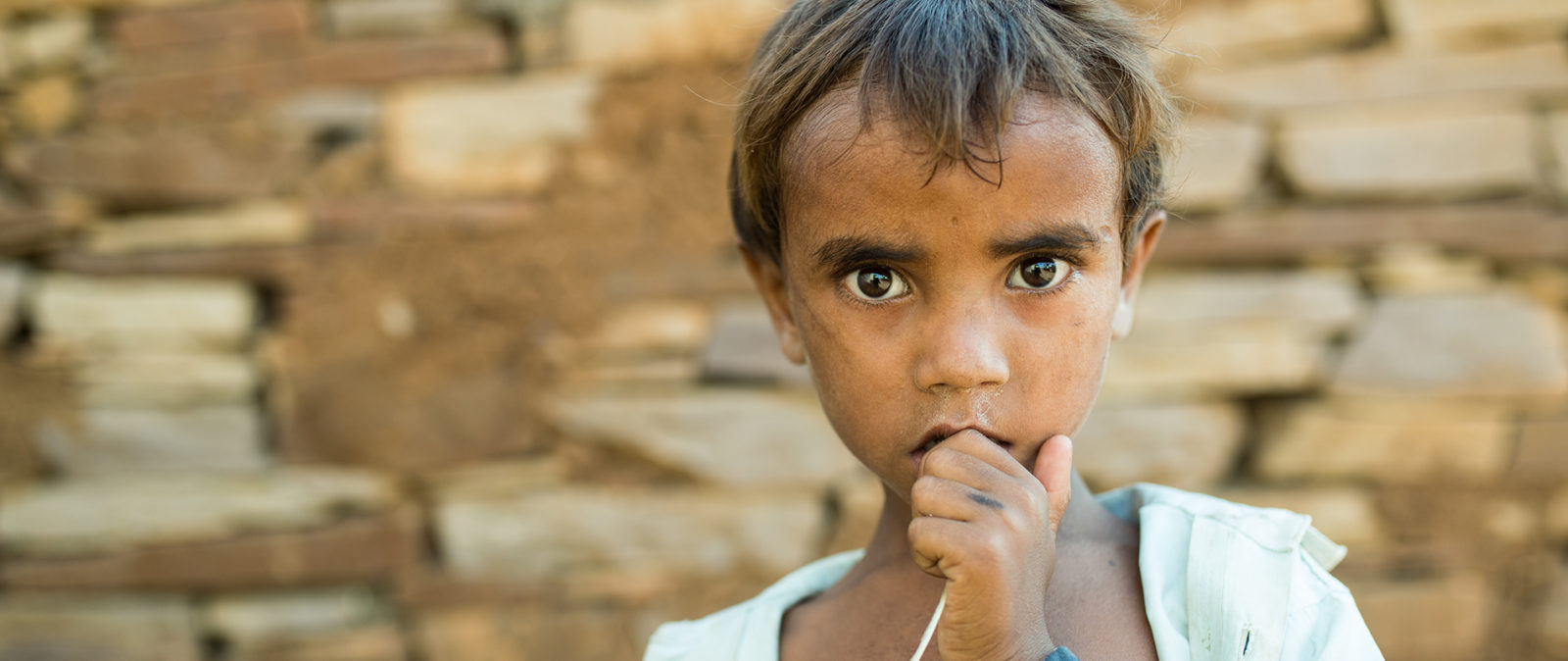
AI for Good
Child Growth Monitor: Using AI to solve world hunger and malnutrition
On a sunny October afternoon, the anganwadi (rural child care center) in the tiny hamlet of Sawadi in Madhya Pradesh is buzzing with action. Field workers from Mahatma Gandhi Seva Ashram (MGSA) supported by Action Against Hunger, a humanitarian organization, is assessing the nutritional status of children aged between 6 months and 5 years. The process usually involves them weighing the children and measuring different body parts like circumference of their head and upper arms. However, today, they are also clicking images of children using a smartphone app.
These field workers, accompanied by representatives from Welthungerhilfe, one of the largest private aid organizations in Germany and employees from Microsoft Germany, are now part of a project, which is using Artificial Intelligence (AI) and cloud to change how government bodies, non-profits and social impact agencies discover and tackle cases of malnutrition and wasting in children globally.
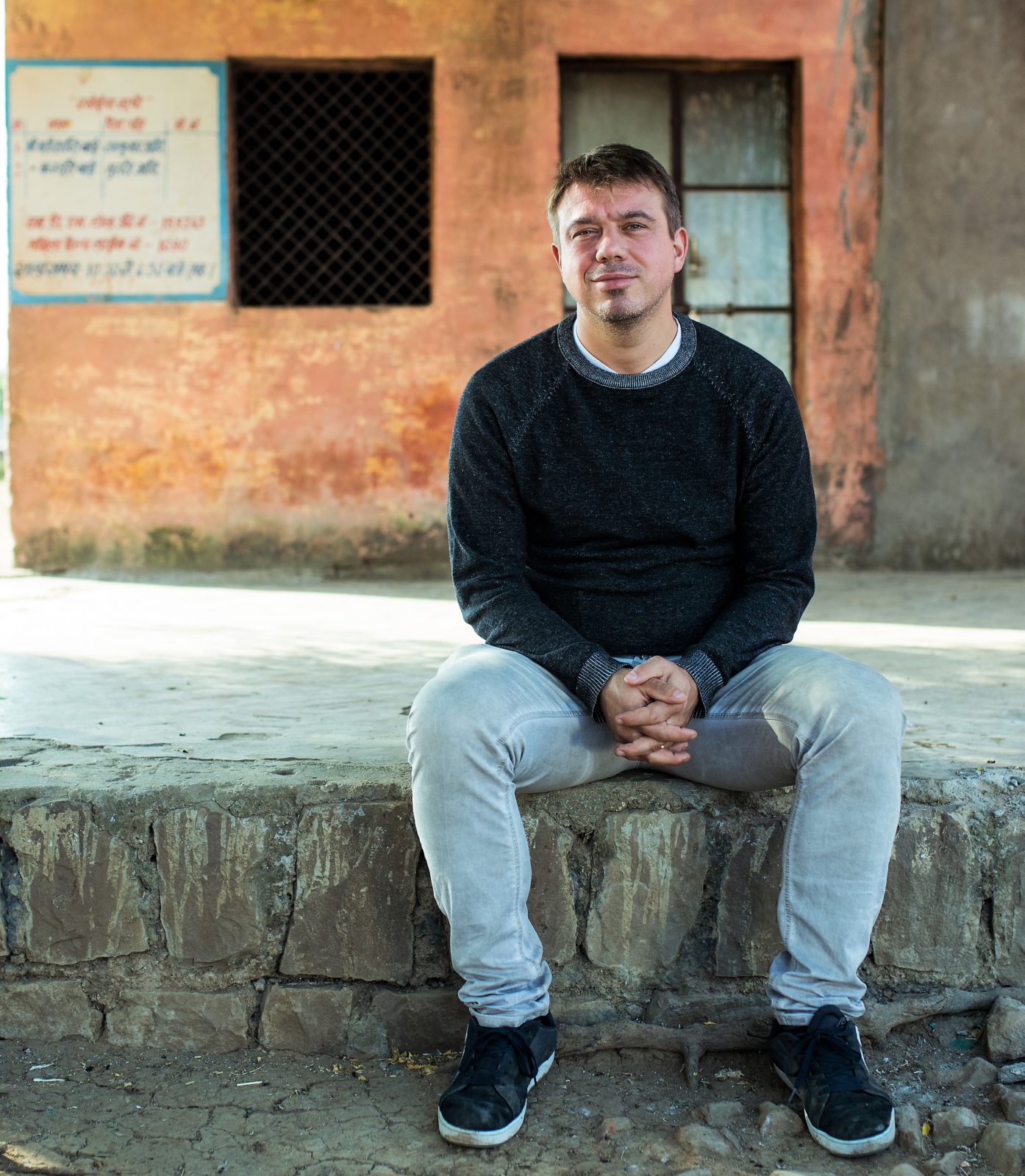
AI: Accurate Intelligence for malnutrition
One of the biggest problems in tackling malnutrition is that it’s difficult to tell by conventional means or the naked eye whether a child suffers from malnutrition. Most of the time, due to flawed data, aid workers are not able to reach out to children who urgently require assistance.
“Today, more than 800 million people around the world suffer from hunger. But you can’t solve hunger if you don’t know where the hungry people are,” says Jochen Moninger, innovation director at Welthungerhilfe, a non-profit based in Bonn, Germany.
According to the National Family Health Survey, 35.7 percent Indian children below five years are malnourished, about 38.4 percent have stunted growth and about 24 percent are wasted, which means they have a low weight-for-height ratio. Overall, 14.8 percent of the Indian population is undernourished. In the sate of Madhya Pradesh, which is also the home of Sawadi, 42.8 per cent children below five years are underweight, 42 per cent are stunted and 25.8 per cent are wasted.
Even though there’s a large workforce of field workers in India that conducts physical checks in children, most workers are ill-equipped or unskilled leading to flawed data. Data management has been another cause of concern because the measurements are manually written on paper, saved in log books and then transferred to Excel sheets. This is a lengthy, time consuming process that’s also prone to human errors, resulting in lack of timely insights to help these children.
Moninger and his team at Welthungerhilfe are developing an AI-powered smartphone app called Child Growth Monitor (CGM) that can scan children and instantly detect malnutrition.
“The idea to develop the CGM app was born in India. We’d been pondering on how to address the challenge of inaccurate measurement and bring about a behavioral change in people in terms of nutrition consumption. That is when the idea of an AI-powered app struck us,” says Moninger.
The app uses an infrared sensor available in some smartphones to capture 3D measurements of a child’s height, body volume and weight ratio, as well as head and upper arm circumferences down to the millimeter.
“CGM helps scan the children in three dimensions and an infrared sensor provides the exact measured values of the body and we derive the nutritional status. The process takes only a minute and thanks to Microsoft, the data is instantly available to us on cloud from anywhere,” says Markus Matiaschek, Head of Product Development, CGM.
The app loads that captured data into Microsoft Azure. Nutritionists and IT specialists then evaluate the scans by using Microsoft AI solutions, pinpointing a child’s dietary health. The experts later pump that data back into the app, training the algorithm to get smarter with each measurement.
Finding roots in India
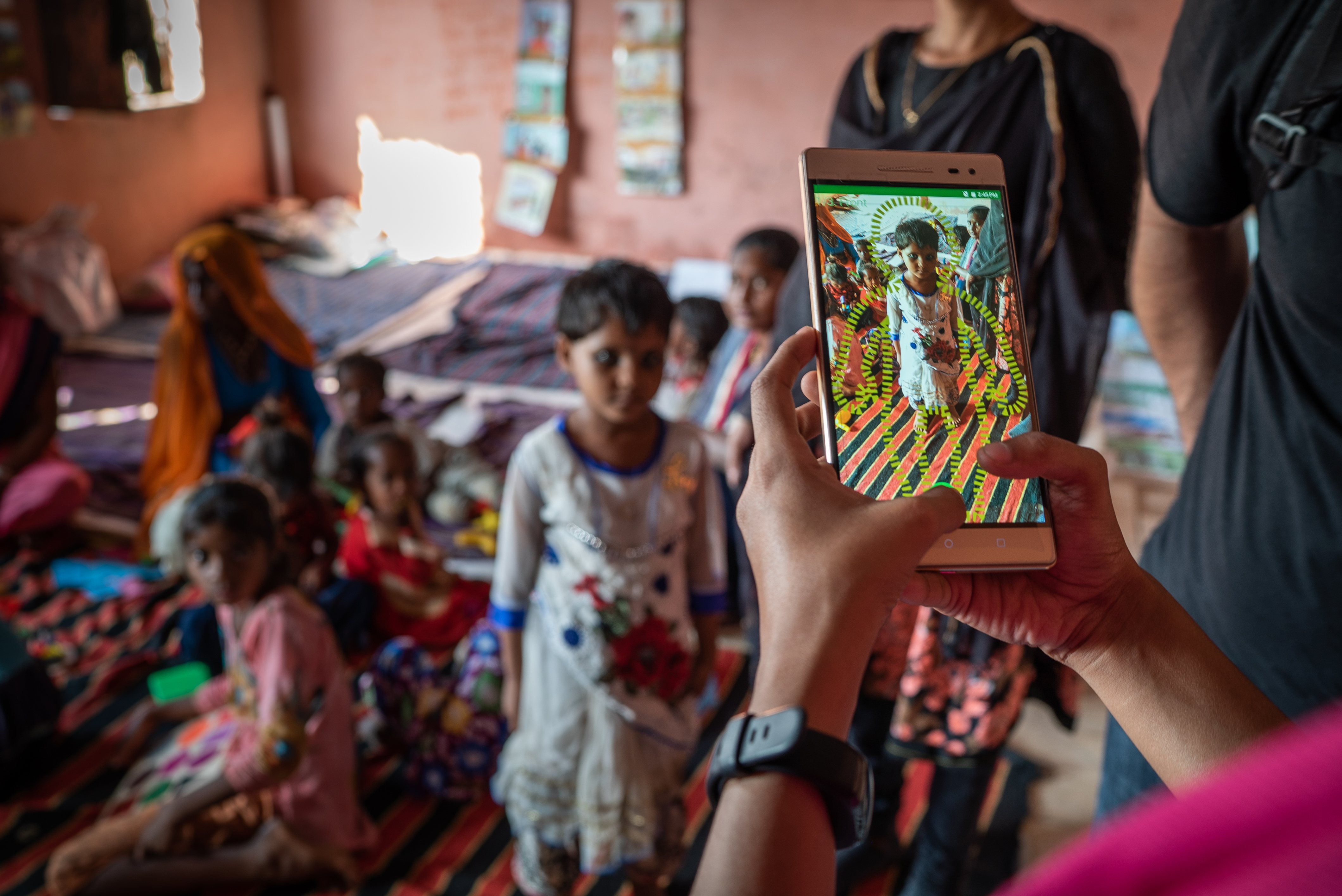
India is the first country where CGM is being piloted by Welthungerhilfe along with its partners Action Against Hunger, MGSA and Darshna Mahila Kalyan Samiti in three states—Madhya Pradesh, Maharashtra and Rajasthan. 150 field workers in 12 teams are supported by Action Against Hunger for using the app to scan children.
“Having Child Growth Monitor on board will hugely impact the early identification of children suffering from malnutrition, thereby reducing the treatment time,” Dr. Shivangi Kaushik, program manager at Action Against Hunger says. “It’s crucial to provide early treatment and reduce mortality due to wasting.”
Currently the team is collecting data both manually and with the app to train the AI model to make it more accurate. Action Against Hunger’s field workers have so far scanned over 7,000 children and are aiming to complete 10,000 scans by March this year.
However, with any data collection comes the responsibility to ensure it is not misused.
“We are dealing with not just any data but data of children. We had to ensure that the privacy and security of this data and we found Microsoft to be a great partner to help us achieve that with its trusted and secure Azure cloud,” Moninger explains.
Macro economics of malnutrition
Life inside a village beset by malnutrition – as Kaushik and Moninger each have witnessed – can be colored by human tragedy and, occasionally, small victories. After his years in rural Africa, in places with no roads and no electricity, Moninger recalls the sight of tiny children with bloated stomachs, a condition often caused by severe protein deficiencies.
He remembers seeing children eat one meal a day, typically rice from pots. He flashes back to how slowly they moved. While working at a school in Sierra Leone, he saw that some children struggled to follow simple lessons. But when his aid group launched a school feeding program in that village, the results came quickly.
“Within a few months, those students caught up. Their school work improved tremendously simply due to the fact they were able to concentrate,” Moninger says.
In many villages, however, the human damage wrought by hunger reverberates for generations, says Dr. Michael Menhart, chief economist at Munich Re, a re-insurance company that is supporting the development of Child Growth Monitor. (Microsoft Germany raised 90,000 Euros in 10 days and Welthungerhilfe is also accepting donations to scale their solution.)
Beyond the humanitarian disaster, hunger tends to devastate economies in nations where it takes root. That stark equation begins with mass malnutrition and ends with a 10 percent lower gross domestic product in affected nations, yet the math also involves several socio-economic realities fundamentally linked to what’s not on the dinner table, Menhart says.
For example, widespread malnutrition tends to increase chronic diseases among afflicted people, which, in turn, spikes national healthcare costs and leaves a country with less money to invest on infrastructure or education.
What’s more, children who suffer from malnutrition also risk poorer cognitive functions and are less likely to attend school, stifling their future job prospects and earning potential, Menhart adds.
Solving world hunger by 2030 with technology
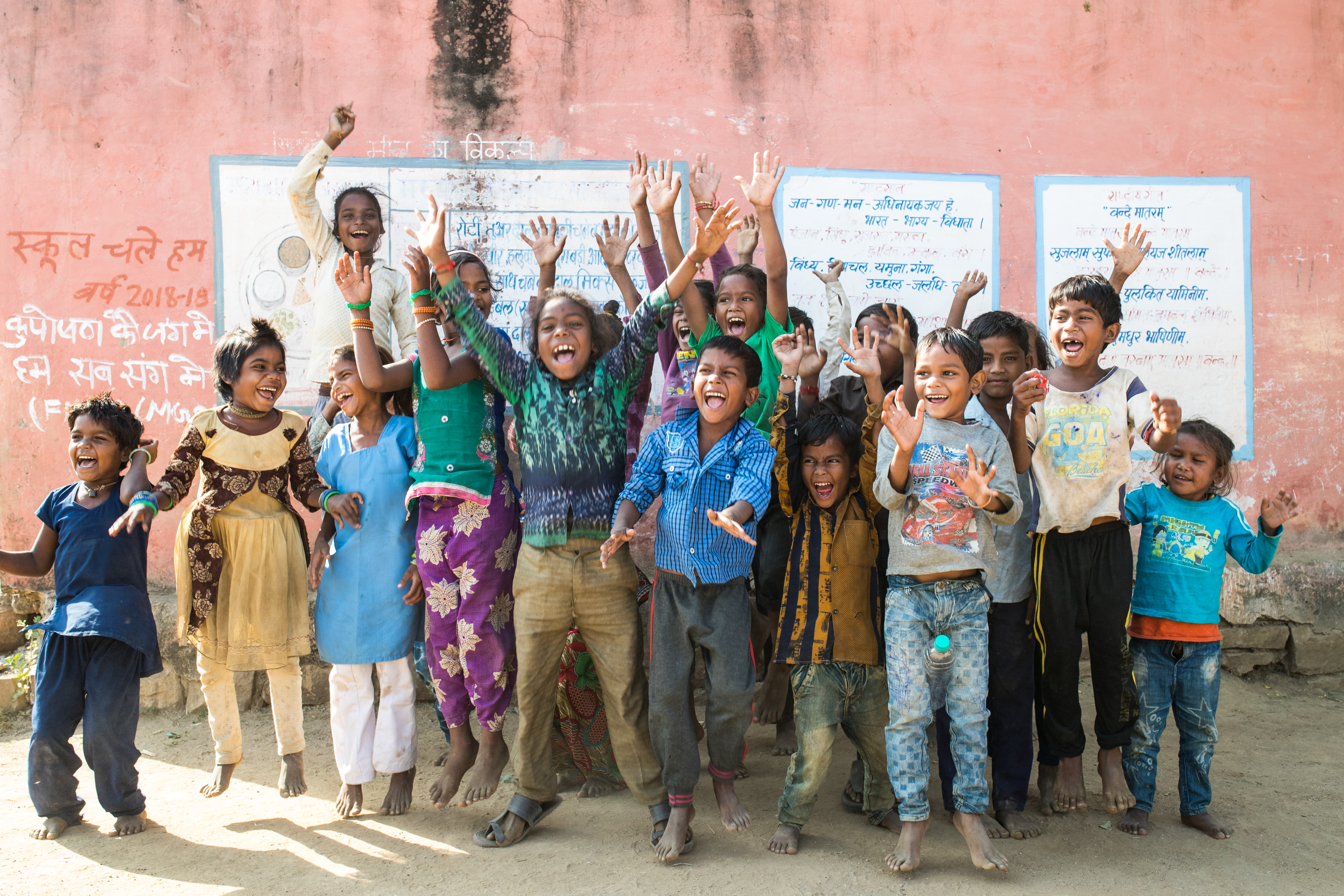
Billions of dollars already are spent to combat malnutrition around the world. But Child Growth Monitor can help those expenditures become more efficient and more targeted, Menhart says.
Moninger believes innovations like CGM can help solve world hunger by 2030, which is also an UNDP sustainable development goal. Welthungerhilfe envisions the app emerging as a recognized, global solution among humanitarian organizations by 2021, allowing nations to redirect money they now spend collecting manual measurements. In India alone, that could free up hundreds of millions of dollars for reinvestment into the lives of children.
“What’s important is that we give hope,” Moninger says. “Sometimes when people talk about hunger, they feel hopeless. There’s this sense that it’s a problem that has always existed and will always exist, and that the people who are hungry are like outcasts.
“But with this new hope comes the willingness to change – and the conviction that we can solve serial hunger by 2030.”






